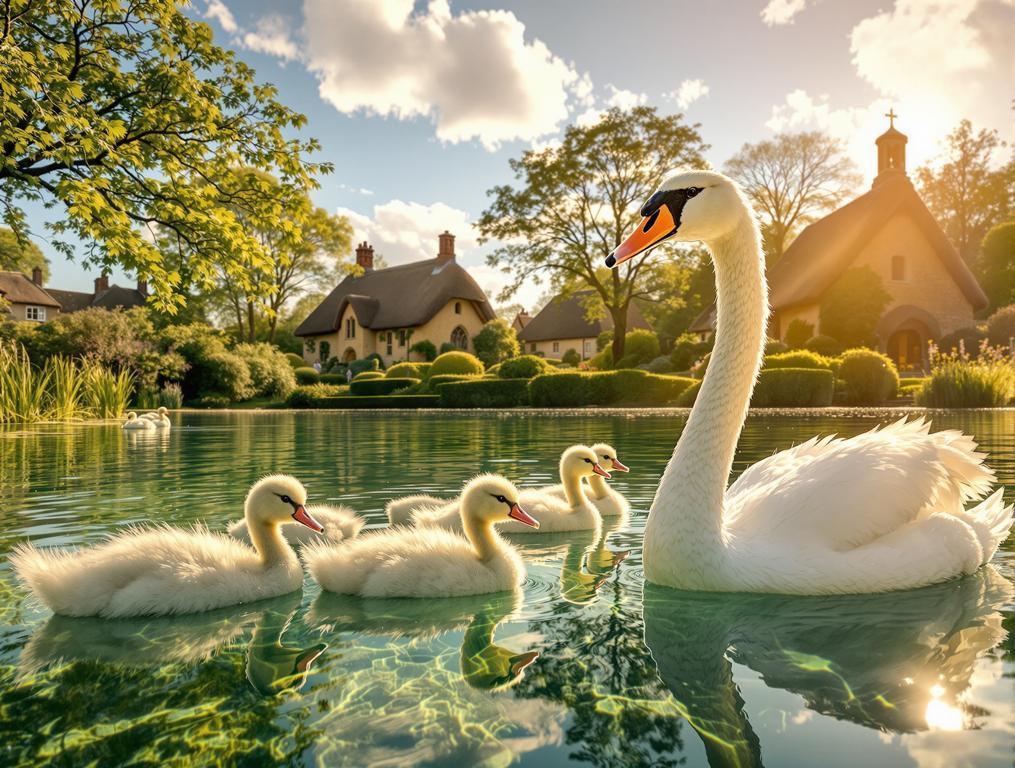I’ve just stepped off the local bus onto Abbotsbury’s Market Street, where the early July sunlight filters through ancient elms. This quiet village of just 451 residents stretches before me, its thatched cottages seemingly plucked from a storybook. What most travelers racing along the Jurassic Coast don’t realize is that this tiny settlement hosts a staggering 40,000 visitors annually – creating an almost 89:1 visitor-to-resident ratio that would overwhelm most communities its size.
Yet Abbotsbury remains blissfully serene, even as larger neighbors like Lyme Regis groan under summer crowds. The secret? A perfect blend of natural wonder and medieval heritage that draws travelers seeking depth rather than spectacle.
England’s Only Wild Swan Colony Offers Rare 8-Week Summer Window
Just beyond the village lies Abbotsbury Swannery, where I’m witnessing something truly unique – England’s only managed colony of wild mute swans. Founded when Benedictine monks established a monastery here in 1040 AD, the swannery has operated continuously for nearly a millennium.
What makes this morning special is timing. I’ve arrived during the critical 8-week summer window when visitors can witness swan breeding behaviors that occur nowhere else in England at this scale. Dozens of fluffy cygnets navigate The Fleet lagoon under watchful parental eyes.
“People think they need to travel to remote wetlands to see wildlife spectacles, then discover this thousand-year tradition happening right here,” a local conservation guide tells me as we watch a pair of swans shepherd their brood through shallow waters.
Unlike other small communities coexisting with significant wildlife populations, Abbotsbury has developed a sustainable balance. The swannery feels neither zoo-like nor overly commercialized, maintaining the wild dignity of these protected birds.
A Village Punching Far Above Its Weight
Wandering uphill, I follow a ancient footpath to St. Catherine’s Chapel, a 14th-century stone structure commanding views across Chesil Beach. This harmonious relationship between villagers and heritage exemplifies how small communities can protect disproportionately valuable cultural treasures.
Unlike the fossil-hunting frenzy of Lyme Regis 16 miles westward, Abbotsbury offers something more contemplative. The village’s subtropical gardens – another surprise in this maritime climate – showcase exotic plants thriving in the microclimate created by the unique geology of Chesil Beach.
“We’re a village of caretakers first, tourism destination second. Everything you see has been preserved for centuries – we’re just the current guardians.”
This philosophy explains why Abbotsbury feels different from other coastal destinations. The swannery joins other small communities preserving centuries-old traditions across Europe, maintaining practices that could easily have disappeared in our fast-paced world.
Unlike Scottish fishing villages that export seafood, Abbotsbury’s economy centers on heritage tourism – yet without sacrificing authenticity. The Ilchester Estate owns much of the surrounding 15,000 acres, ensuring development remains measured and appropriate.
What the Guidebooks Won’t Tell You
For the perfect Abbotsbury experience, arrive at the swannery before 10am when the morning feeding ritual takes place. This tradition has continued since medieval times, with cygnets most active during the early morning hours.
The village’s thatched Tea Rooms serve Dorset cream teas for £8.50, but locals recommend bringing a picnic to enjoy at the secluded beach access point just beyond the chapel – a spot rarely mentioned in travel guides.
St. Catherine’s Chapel joins other remarkable medieval structures in small European villages that have survived centuries of weather and war. Visit at sunset for golden-hour photography when the ancient stones glow amber against the darkening sea.
As I head back to catch the afternoon bus, I pass cottages where families have lived for generations. My daughter Emma would love the cygnets, I think – their vulnerable grace so at odds with the wild power of the nearby Jurassic coastline. Like the swans themselves, Abbotsbury maintains a delicate balance between accessibility and preservation, welcoming visitors while never surrendering to tourism’s sometimes destructive tide.
